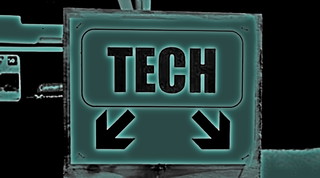
Before any runs can be taken, there always comes Tech. The Solo Rules state a car must be presented for inspection in the same condition in which it will compete. People often show up without their competition tires/wheels, without their helmet, with no class letters/numbers on the car, and with the car still full of “stuff”. Cars should be brought to Tech as if they’re going directly to the Start for their first competition run. Here are a couple highlights of common issues we see:
Batteries. We check all batteries to make sure they’re secure. These things can weigh anywhere from 4 lbs to over 50 lbs, so they’re a concentrated mass that can wreak havoc if they come loose during a run. If the terminal connections aren’t tight the best case is the car dies on course and delays the event, worst case is they come loose and create sparks which could ignite fuel fumes. It’s surprising how frequently issues with batteries are found.
Harnesses. Racing harnesses aren’t required, but if they’re installed they, must be installed properly per the manufacturer’s instructions or they could likely fail in the event of impact. Open cars with harnesses must have a roll bar that clears all drivers’ heads (A-Mod requires a 2” clearance). All drivers must be present to prove clearance to pass Tech.
Loose objects. You would be surprised how many radar detector, garage door openers and snap-on/fall off wheel trim items still in place. Vehicles should come completely emptied out of anything that could bounce around and possibly jam a pedal from moving. For 2015 the Solo Rules still require the driver floor mat to be removed. Yes, the SEB has recommended that rule be changed, however the Board of Directors has not yet approved that, and if they do it won’t be effective until 1/1/16.
Running gear. It’s surprising how often cars come into Tech with fuel/oil leaks, excessive play in wheel bearings, brake fluid that looks like it hasn’t been changed in decades, missing lugs/nuts, cracked brake rotors, etc. Make sure to thoroughly check all of the operating systems of their car before they head to Lincoln.
Catch cans. Cars with oil and/or cooling systems that are vented to atmosphere must have a reservoir to retain fluid overflow, and for cars beyond “Street” level prep those must meet the minimum size requirements stated in the Solo Rules (1 quart for Prepared/Mod, 2 oz for Karts). This both a safety issue and an event operations issue and is strictly enforced.
Driver safety equipment. Tech is expected to check all required driver equipment and specifically suits/jackets/shoes/gloves/neck braces for Kart drivers. Kart drivers should bring all their personal safety equipment to Tech to be inspected.
Class specific safety rules. Some classes such as Prepared and Mod have their own specific safety requirements. An example being that Prepared requires a roll bar for all open top vehicles. If you show up with a rental car on street tires and it doesn’t have a roll bar, it can’t run in Prepared. There are no exceptions to safety rules.
Vehicle identification. The Solo Rules are very specific on the requirements for letters and numbers, as well as contrast. Please read Section 3.7 of the Solo Rule book! ALL letters and numbers must be of the same font/typeface and color (including the “1” for a 2-driver car and the “L” for ladies classes), must meet the minimum sizes specified, and must provide contrast sufficient to be read on a car 50 feet away going 50 miles an hour (Hint: red letters/numbers on a black car, or black letters/numbers on a red car, do not provide enough contrast). For those with an artistic bent, do yourself and course workers a favor, please use single color block letters/numbers and apply that creativity in other areas. Karts with smaller than 8” numbers must have numbers on both sides, front and rear. Make sure to have your rear number displayed.
Story by Mike Brausen














